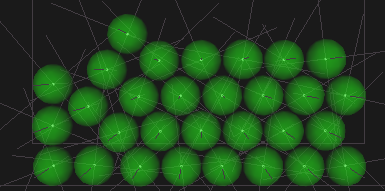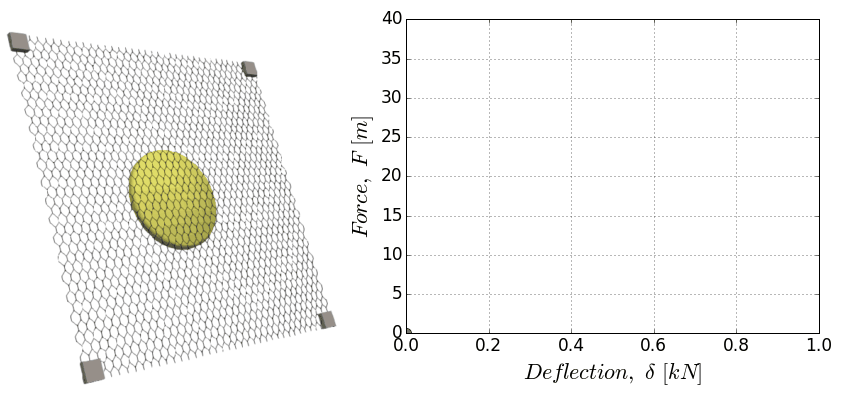This web tool is intended to help designers in evaluating the maximum retaining capacity of a simple anchored mesh with a squared anchor pattern. The tool permits the evaluation of the mechanical response of the mesh panel in terms of a resulting force-displacement curve. The calculation is referred to the double-twisted hexagonal wire mesh 8×10 with a wire diameter of 2.7 mm.
How it works:
Select the design values of:
- D: punching element size [m]
- dp: anchor plate size [m]
- i: spacing between anchors [m]
Press "Calculate" and have a look at the force-displacement curve.
The red point represents the maximum value of the normal force and the corresponding deflection of the mesh panel. At this point, the wire mesh could break close to the punching element ("Block-punching mechanism") or to the anchor plates ("Anchor-punching mechanism") depending on the relative size of the two elements.
Designers should be aware that sharper punching elements, as well as not centred loads, could induce premature failure of the mesh panel.
For more information about the calculation, the failure modalities, and other effects, see: . The authors are not responsible for the improper use of this tool.
This web tool has been created by Fabio Gabrieli, Antonio Pol, Marion Bost and Lorenzo Brezzi with the JSXGraph JavaScript library. Thanks to Enrico Oliosi and Andrea Franceschini for their valuable hints.

